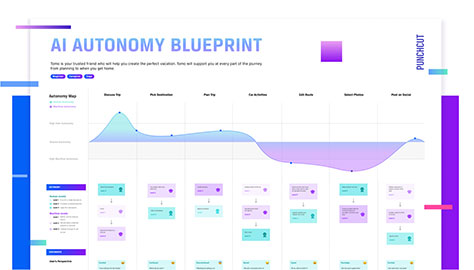Rapid innovation in AI will continue to change our world in profound ways. So, for UX designers, it’s time to reflect on our true objectives for the AI race. Conducting primary user research to inform design is still necessary to ensure that products meet users’ specific needs and deliver measurable business value. The biggest challenge ahead well might be ensuring that AI is benevolent, cooperative, and works in the service of human beings. As I’ve said before, generative AI’s highest value is in achieving a realistic balance of user assistance and autonomy—both in the design process and the resulting products. The key goal for the next generation of innovative Gen AI should be to create products that both assist people and cooperatively augment their human capabilities. Only then can AI fulfill the dream of cooperative intelligence.
Fundamental Cooperative-Intelligence Design Questions
Throughout human history, cooperation has been a key driver of success for various entities, whether they are living organisms, businesses, families, or even countries. Cooperative relationships, despite their being quite basic, offer significant benefits in comparison to individual efforts. These partnerships have played a crucial role in major human accomplishments such as the establishment of democracies, the United Nations, and the Human Genome Project. Key characteristics of cooperative relationships include supporting each other, trusting one another, showing respect, listening attentively, and having a commitment to learning.
When we apply these qualities to the world of AI and machine learning, UX designers can nurture partnerships between human beings and machines. I call this cooperative intelligence and define these cooperative relationships based on three core qualities: they are assistive, affective, and adaptive.
To be successful in creating products that exhibit cooperative intelligence, you must first answer some fundamental questions about what this would mean for the particular type of product you’re designing.
1. How can your new product, service, or feature balance assistance and autonomy?
Long-term competitive advantage derives from products that provide real value to users. Our research shows that people want to experience seamless, natural assistance without losing control of machine-human interactions. Users need interactions to align with their intentions and values—interactions that actually make their tasks easier. Plus, people want products that are intelligent enough to understand when and how they can support users, by complementing users’ intelligence, while preserving their personal sense of agency, rather than by trying to replace them.
Once a UX team conducts user research, UX designers can determine when, where, and why people favor autonomy, control, assistance, and convenience across the product experience. In our design practice at Punchcut, we have been using Autonomy Service Blueprints to gain insights regarding how to build more effective and cooperative AI experiences. Figure 1 shows an example.

